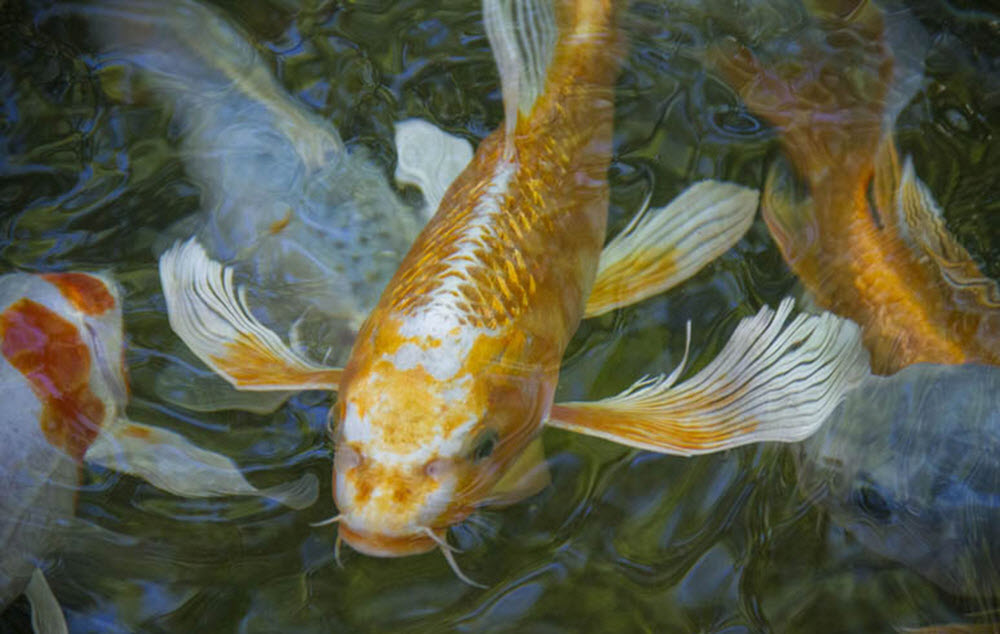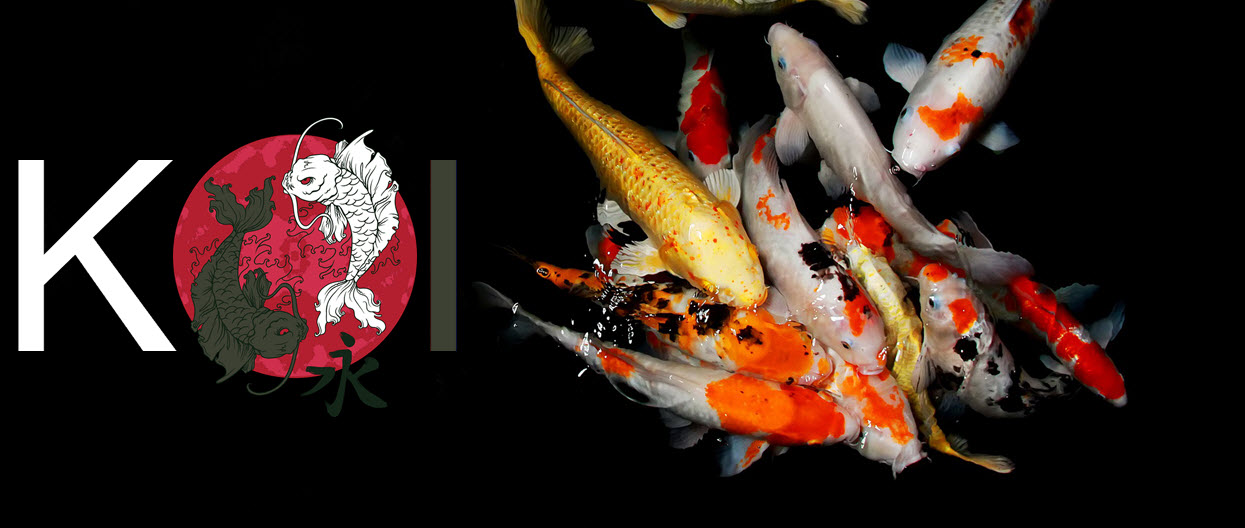Butterfly koi is a group of ornamental fish famous for their elongated and delicate finnage. In some variants, the barbels grow long too, and may fork into elaborate designs.
Buttfly koi are also known as dragon koi, as the fully-grown specimens look like long, slinky Asian dragons “flying” through the water.

Are butterfly koi really koi?
Some purist koi keepers do not consider them true nishikigoi.
In Japan, Zen Nippon Arinkai (ZNA) does not permit buttefly koi in koi competitions. Since ZNA is a highly influential organisation in the world of koi exhibitions, their ban has had a major impact.
In the United States, the Associated Koi Clubs of America (AKCA) created new standards in the mid-2000s that permitted the competitive judging of butterfly koi on their events in the U.S.
Keeping butterfly koi
Buttefly koi can be kept in ponds and tanks. It is possible to keep them together with regular koi, as their preferences when it comes to environment and food are very similar.
You need to be more careful when handling your butterfly kois though, because there is an increased risk of broken, torn and otherwise damaged fins. Netting is risky, and it is also a good idea to avoid including physical elements in the pond where the fins could easily get stuck or entangled.
Butterfly koi are pretty hardy and surprisingly capable of surviving injury to their fins (as long as their overall health is good), but from an animal welfare perspective it is of course better to prevent injuries from happening in the first place. Also, former injuries can impact the fish from an aestetical point of view. It is for instance common for a split tail to heal but remain split. Unusually large bends and waves in the fins can also be the result of injuries earlier in life.
Background
Even though the butterfly koi are a fairly new addition to the ornamental fish hobby, their origin or origins are rather obscure, and several stories and legends are circulating about how they came to be. Below, we will take a look at two of these stories.
Japanese origin
In this story, the Japanese Crown Prince Akihito visits the Saitama Prefectural Fisheries Experiment Station in Japan in July 1977. There, he suggests crossbreeding Japanese ornamental fish with a long-finned carped from Indonesia; the Carpio var. Flavipinnis C.V. The experiment station started breeding koi in 1980, and the butterfly koi was created in 1982. According to this story, offspring of the Saitama butterfly koi was then brought to the Imperial Palace to live in a pond in the East Gardens.
United States origin
In the early 1980s, a type of carp living in canals and ditches in Indonesia attracted the attention of a company in New York who imported some specimens into the United States. These carps were notable for their long fins, but were otherwise rather drab, sporting brown and grey coloration. Because of their rather dull colouration, they failed to become a success on the ornamental fish market in the United States.
The carps did however catch the interest of a group of fish breeders at the Blue Ridge Fish Hatchery. They purchased a dozen fish and, over the course of several years, crossbred them with good-looking koi fish. One of the main driving forces was the koi breeder Wyatt LeFever.
The breeding program made several interesting discoveries:
- The long-fin gene turned out to be dominant, and it was not very difficult to develop specimens that were both colourful (like koi) and long-finnes (like the Indonesian carp).
- The resulting fish could be bred back to colour, and the Blue Ridege Fish Hatchery managed to develop several different colourful lines.
- The resulting fish was robust and disease resistant.
Allegedly, it was Wyatt LeFever´s young son Randy who coined the name butterfly koi, by exclaiming “Dad, they look like butterflies!”.
Buttefly koi appearance
Body shape
Compared to standard koi, butterfly koi tend to have a more slender body shape.
Colours and patterns
A lot of effort has been put into developing butterfly koi that display the traditional koi colours and patterns, such as kohaku, showa, utsuri, etcetera. The patterns are typically exhibited in a slightly different way, since the butterfly body is more elongated.
Solid coloured butterfly koi
While solid coloured standard koi is generally not much sought after on the koi market, lemon and platinum ogons (solid colour) has actually become quite popular among butterfly koi keepers. With their elongated fins streaming behind them, they are likened to a yellow moving fireball or silvery comet in the sky.
Can I get black butterfly koi?
Yes, but sourcing them is still difficult, and they tend to be comparatively expensive. The glistering jet-black doitsue, karasu butterfly is known to be especially costly. (Notably, it has no scales.)
Butterfly koi breeders have reported that solid black butterflies seem to be especially likely to grow really large. They have been nicknamed “shadow dragons”.
What´s a sorogi butterfly koi?
A sorogi butterfly koi is overall grey with a black fish net pattern (fukurin). It is less common in the trade than the more eye-catching colourful butterflies, but have developed a fan liking among fish keepers who love their slow-moving mysterious grey “pond monsters”.
The fins
In wild carps, the fins grow to a genetically specified length and then stop growing. With the butterfly koi, the length-growth gene for the fins doesn´t work in its normal fashion, so the fins keep growing and growing – until they must stop because the blood vessels would not be able to provide them with sufficient circulation if they grew any longer.
An individual fish having a fin-length gene that doesn´t work properly is something that happens now and then in the wild too, and to many different species of fish. In the wild, it is usually a drawback – the long fins can for instance increase the risk of the fish becoming eaten by a predator early on in its life. Therefore, in many circumstances, evolution will not favour the proliferation of this faulty gene. (There are exceptions.)
In captivity, the situation is different. Humans have intervened and deliberately kept these long-finned carps alive and healthy in their breeding programs, and ensured that they got the opportunity to have plenty of offspring throughout their lives.
Fin rays
Just as with other koi, the fins of the butterfly koi contains dozens of rays that radiate outward and support the fin. These rays are not bone; they are cartilage.
In most butterfly koi, the rays will grow straight (or fairly straight) until they reach past the point of normal koi fin ray length. After that, they are prone to grow wavy. Some specimens of butterfly koi have rays that continue to grow straight even after this point, and they normally fetch a higher price as they are considered more impressive looking.
